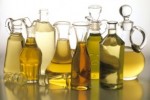Cold water immersion has become increasingly popular as way to treat exercise-induced muscle damage as well as rehab injuries by trying to minimize inflammation, swelling, and pain. A recent study published by the ACSM examined the effects of both cool and cold water immersion post-exercise in order to determine if colder water has a greater effect on blood flow in the skin and femoral artery as well as muscle temperature.
In this study, the researchers had twelve men exercise until their core temperature reached 38°C. At this point, the participants were then immersed in either cold (8°C) or cool (22°C) water while their skin temperature, muscle temperature, and blood flow were monitored for up to thirty minutes after immersion.
The researchers found that blood flow responses in the participants were similar for both the cool and cold water immersions as well as resting conditions. This suggests that the benefits from cold water immersion may not come from the effect on blood flow, but rather other mechanisms, such as decreasing tissue temperature.
The cool and cold conditions were successful in decreasing both deep and superficial muscle temperature; however the colder water produced greater reductions in temperature. The researchers also found that even after the ten minutes of cold water immersion, deep muscle temperature continued to decline (up to 30 minutes after immersion).
It is important to note that the use of ice packs to cool large muscle groups post-exercise is not as effective as cold water immersion and are therefore not ideal to use. However, because the colder water immersion had more of an effect on deep muscle temperature, this may be a more effective choice than cool water in treating exercise-induced muscle damage and injuries while lessening inflammation.
Reference:
Mawhinney, C., Jones, H., Joo, C. H., Low, D. A., Green, D. J., & Gregson, W. (2014). Influence of Cold-Water Immersion on Limb and Cutaneous Blood Flow after Exercise. Medicine & Science in Sports & Exercise,45(12), 2277-2285.







